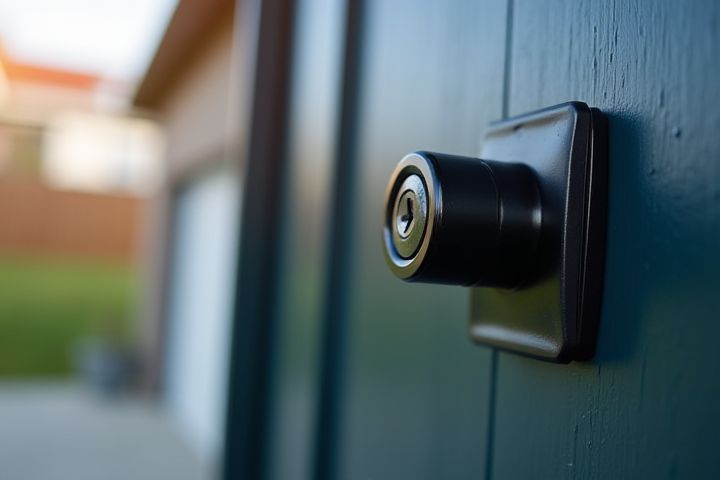
Securing a smart house involves implementing a variety of cybersecurity measures to protect connected devices such as smart locks, cameras, and thermostats. Start by using strong, unique passwords for each device and change the default login credentials to prevent unauthorized access. Regularly update the firmware of your smart devices to patch any security vulnerabilities, as these updates often contain essential fixes. Additionally, consider enabling two-factor authentication (2FA) on your devices and accounts for an added layer of protection. To further enhance security, utilize a separate Wi-Fi network for your smart home devices, isolating them from your main network and reducing the risk of cyberattacks.
How To Secure A Smart House
Secure Wi-Fi network
To establish a secure Wi-Fi network for your smart house, start by changing the default username and password of your router, as these are often easily accessible to hackers. Utilize WPA3 encryption, the most advanced security protocol, which provides enhanced protection for your wireless connection. Regularly update your router's firmware; manufacturers frequently release updates to patch vulnerabilities, ensuring your network remains secure against emerging threats. Finally, consider enabling a guest network for visitors to compartmentalize your devices, minimizing exposure to potential risks on the main network.
Use strong, unique passwords
To secure a smart house effectively, prioritize the use of strong, unique passwords for each device and application. Incorporate a combination of upper and lowercase letters, numbers, and special characters, aiming for at least 12 characters in length. Regularly update these passwords and avoid reusing them across different accounts to minimize the risk of cyberattacks. Utilize password managers to generate and store complex passwords securely, ensuring easy access while maintaining high security for your smart home environment.
Enable two-factor authentication
Enabling two-factor authentication (2FA) is crucial for securing your smart home system from unauthorized access. This process requires you to provide two forms of identification before gaining access, typically your password and a unique code sent to your mobile device. Ensure that all smart devices, including security cameras, smart locks, and thermostats, support 2FA and enable this feature through their respective apps or web interfaces. By implementing this additional security layer, you significantly enhance the protection of your home's network against potential cyber threats.
Regularly update device firmware
Securing a smart house involves prioritizing the regular updating of device firmware to protect against vulnerabilities and cyber threats. Manufacturers frequently release firmware updates that patch security flaws and enhance functionality, so staying proactive with these updates is essential. You can automate updates for compatible devices, ensuring your smart home ecosystem remains fortified without your constant intervention. Regular firmware maintenance not only safeguards your privacy but also prolongs the lifespan of your smart devices.
Install robust firewalls
Installing robust firewalls is crucial for securing your smart home network. Firewalls act as a barrier between your devices and potential cyber threats, enabling safe communication and protecting sensitive data. Consider using a next-generation firewall (NGFW) that includes features such as intrusion detection, application awareness, and deep packet inspection to enhance your security. Regularly update firewall software and device firmware to mitigate vulnerabilities, ensuring that your smart home remains protected against evolving threats.
Monitor network traffic
To secure your smart home, monitor network traffic regularly using tools like network analyzers. These tools can help identify unusual patterns or unauthorized devices connected to your Wi-Fi network, ensuring that only trusted smart devices have access. Implementing a separate guest network for visitors will also enhance security, isolating your main devices from potential threats. Keep your router firmware up to date, as manufacturers frequently release updates that patch vulnerabilities and improve security protocols.
Segment smart devices on a separate network
Securing your smart house begins with segmenting smart devices on a separate network to enhance privacy and minimize vulnerabilities. By creating a dedicated Wi-Fi network for IoT devices, you prevent potential intruders from accessing sensitive data stored on your primary network. Use strong encryption protocols, such as WPA3, to fortify this separate network and regularly update device firmware to safeguard against known exploits. Consider implementing a robust firewall that monitors traffic between networks, allowing you to detect and respond to suspicious activity effectively.
Use encryption for data transmission
Securing a smart house involves prioritizing encryption for data transmission to protect your personal information from unauthorized access. By implementing strong encryption protocols, such as AES (Advanced Encryption Standard), you can ensure that data exchanged between your smart devices and cloud services remains confidential and secure. Regularly updating firmware and security settings on your devices can further enhance protection against vulnerabilities and potential breaches. Always consider employing a Virtual Private Network (VPN) for an added layer of security when managing your smart home remotely.
Disable unused features or services
Disabling unused features or services in your smart home system significantly enhances security by reducing potential attack vectors. Start by identifying all devices connected to your network, such as smart speakers, security cameras, and thermostats, and access their settings. Turn off features like remote access, cloud storage, or guest networks that are not necessary for your daily usage. Regularly review and update the device firmware to ensure that all security patches are applied, further safeguarding your smart home environment against vulnerabilities.
Utilize reputable cybersecurity solutions
Utilizing reputable cybersecurity solutions is vital for securing your smart house. Look for systems that offer end-to-end encryption, which safeguards your data from unauthorized access. Regularly update your software and firmware to counteract vulnerabilities; studies show that homes with outdated smart devices are 2.5 times more likely to experience a security breach. Incorporate a network firewall that can monitor traffic patterns, allowing you to identify any suspicious activities that may compromise your home's safety.
